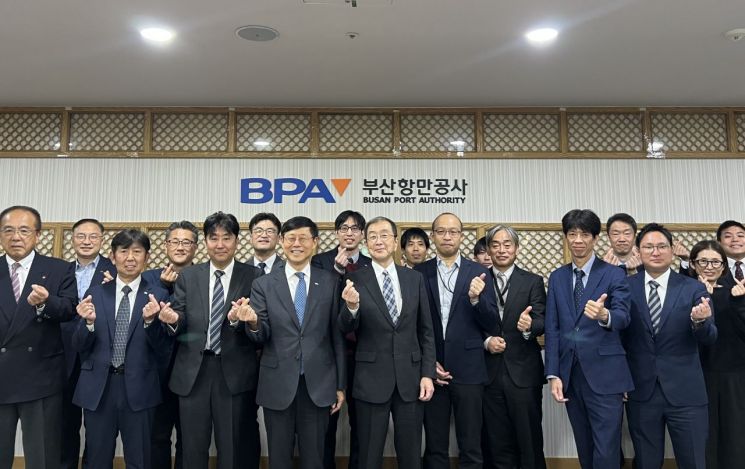Introducing Busan Port’s Future Vision and Digital Logistics Innovation
Restoring Trust and Expanding Usage among Japanese Shippers Expected
Busan Port Authority (BPA), led by President Song Sanggeun, hosted the ‘Busan Port Fam Tour’ from November 12 to 13, inviting key shippers and logistics company officials from the Kyoto region of Japan.

Busan Port Authority held a “Busan Port Fam Tour” inviting cargo owners from Kyoto, Japan, and they are taking a commemorative photo. Provided by Busan Port Authority
The tour included major shippers and logistics companies from the Kansai region, such as Kyoto and Osaka, engaged in the import and export of machinery, chemicals, paper, and precision parts.
Participants toured Busan Port’s large-scale terminals and hinterland complexes, received briefings on the port’s operational status and transshipment competitiveness, and learned about future visions such as the creation of a megaport through the development of Jinhae New Port. Attendees expressed particular interest in Busan Port’s plans to enhance logistics efficiency based on large-scale infrastructure expansion and digital transformation.
Since the global logistics crisis in 2021, concerns about congestion at Busan Port have been raised in Japan, leading to a decline in usage by some shippers and a continued decrease in Busan Port’s transshipment cargo volume to Japan.
To address these concerns, BPA shared that the yard utilization rate has recently stabilized at below 70% and explained the current status of efficient cargo handling through digital transformation, including the transshipment monitoring system (Port-i), transshipment transportation system (TSS), and electronic delivery order (E-SLIP).
Additionally, participants visited shipping companies operating on the Korea-Japan route, such as Korea Marine Transport and Sinokor Merchant Marine, to hear about the current status and operational plans of the Maizuru Port-Busan Port route used by Kyoto shippers, and exchanged opinions on logistics efficiency improvement measures.
Through this visit, participants confirmed the stable operational system and service capabilities of Busan Port based on efficiency. BPA plans to continuously monitor changes in shippers’ transshipment cargo volumes and strengthen marketing efforts to expand the use of Busan Port.
Song Sanggeun, President of Busan Port Authority, stated, “Japan is the closest core market geographically to Busan Port,” and added, “We will do our utmost to ensure that Japanese companies recognize Busan Port as the most efficient and reliable transshipment hub.”
© The Asia Business Daily(www.asiae.co.kr). All rights reserved.


AloJapan.com